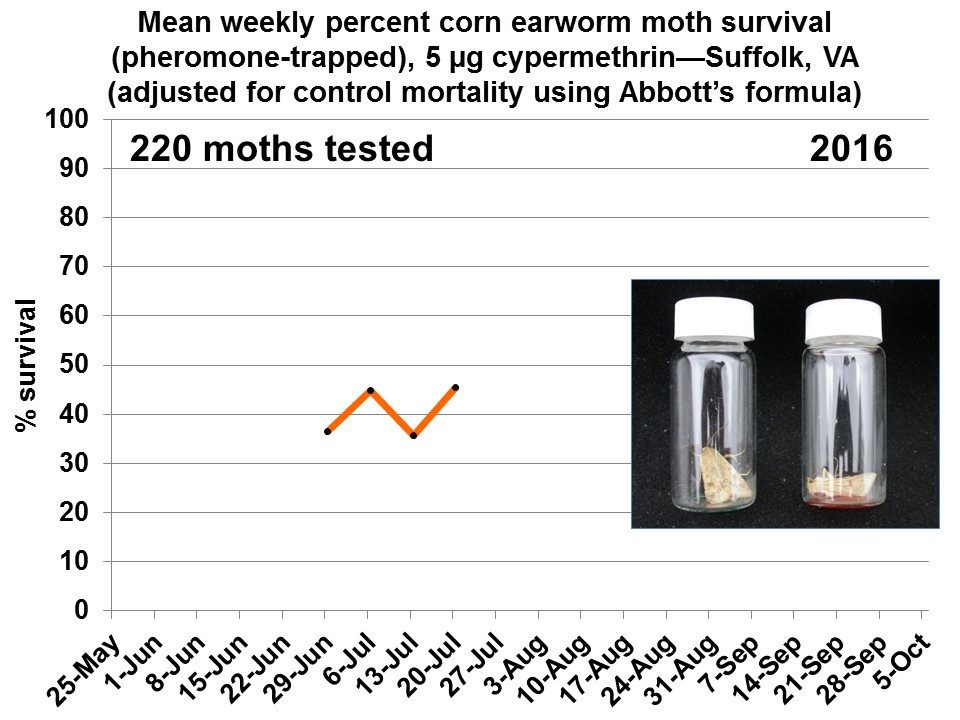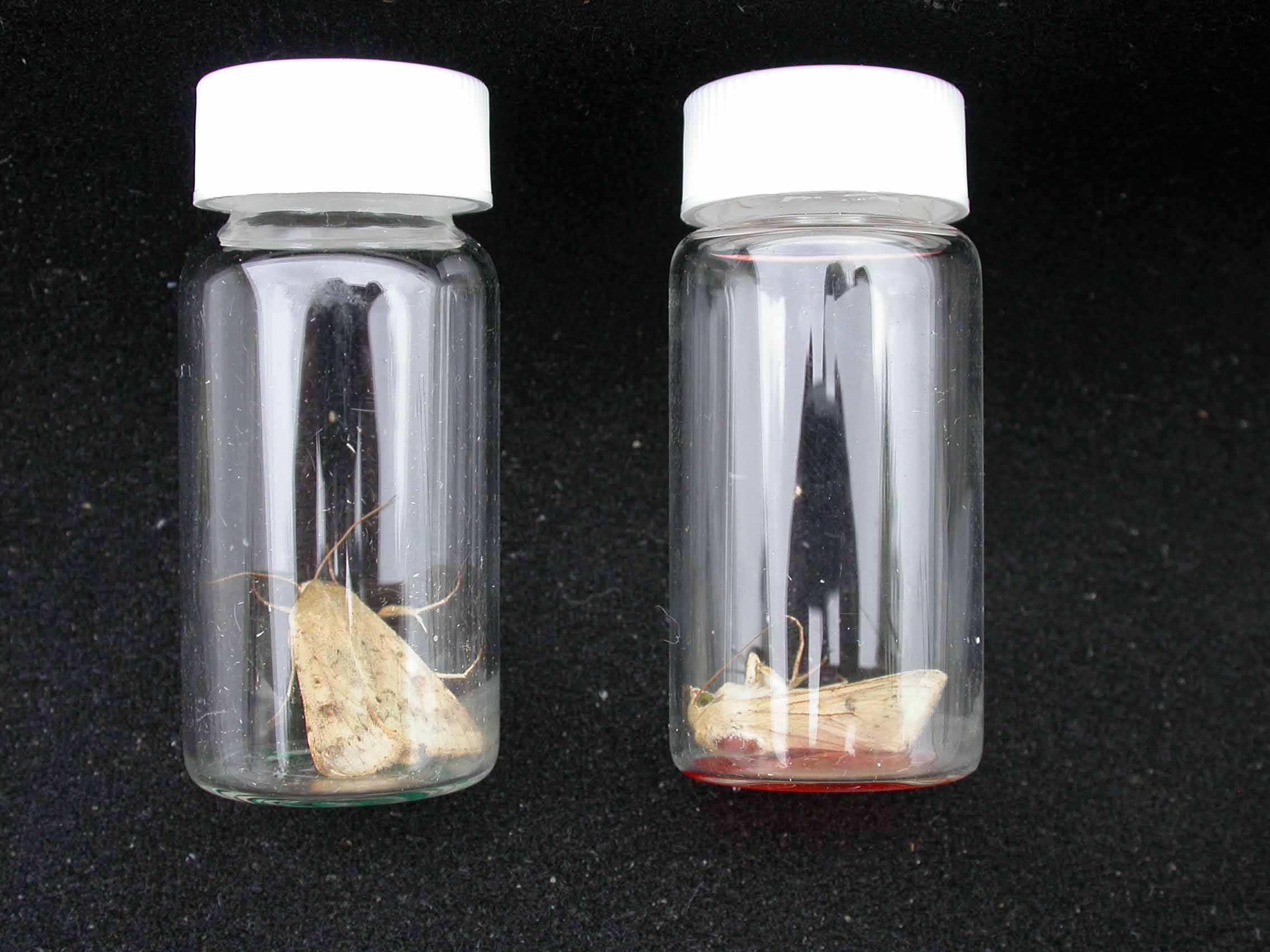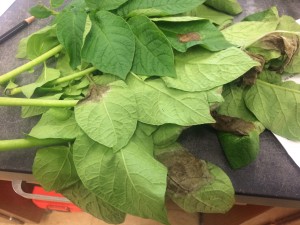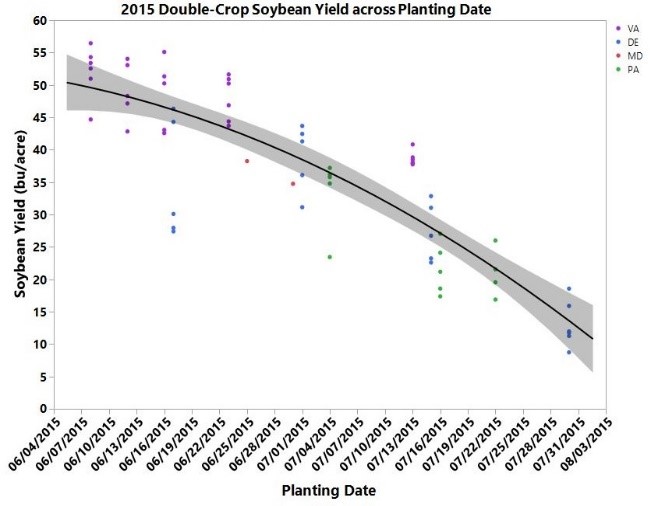Indeed, 2016 was not a good year for effective nodulation and early peanut root growth in the Virginia and Carolina region. The growing season started relatively cool and wet. Under this condition peanut developed only a few roots with a reduced number of nodules. These plants were smaller and less green than “normal” plants in particular when planted in crop residue because this maintained soil cooler and wetter. Figure 1 is an example and shows three peanut plants planted on May 9 and picture was taken on June 25. Two plants at the left are smaller, yellower, and with less root growth and number of nodules. These were planted in sorghum residue. The plant at the right is bigger, greener, and has more roots and nodules, but was planted in cultivated and sandier land.

Smaller and yellower two plants at the left are due to poorer nodulation than for plant at the right, even though planted at the same time.
What can be done to prevent poor nodulation, then? One very important thing is to inoculate at planting. But even then, in cool and wet soil roots grow slow for fast inoculation and Bradyrhizobium bacteria may die in absence of oxygen if the soil is too wet. Ammonium sulfate can be used up to 150 pounds of nitrogen per acre, which is about 714 pounds of ammonium sulfate per acre. Usually at beginning flowering poor nodulation will show up in yellow and smaller plants, and right then inorganic nitrogen needs to be applied. The sooner, the better.
It is, therefore, important to scout not just for disease and insects but also for the number and size of the nodules in the first 45 days after planting. To establish a threshold of nodules a farmer should look for during this time, my program has found that after two weeks after planting an average number of 5 big nodules on the main root is to be expected; at 30 days, 70 nodules of any size on the main and lateral roots; and about 130 at 45 days after planting.





